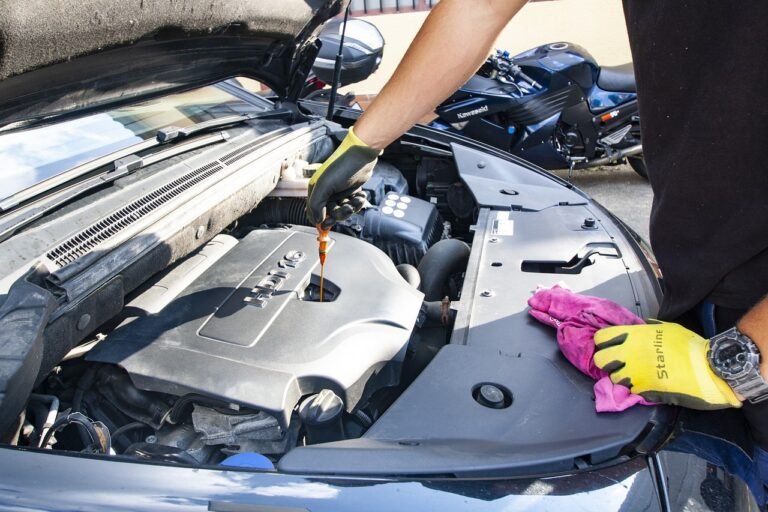
Every time we visit our Indo German Motor works service station for periodic maintenance we are encountered by a dilemma of choice about our Engine Oil. Every service station has its own oil partner and they recommend that brand only. Even if we were to make our own choice we have numerous Brands and their countless grades and varieties. So the question arises – Is this oil good for my car? Is this oil really performing as it is claimed and may more such questions. These questions are important for the life of your engine as well as load on your pocket. So let’s have a quick look on how to make a decision before choosing your engine oil.
The journey of engine oil starts with crude and its development through various complex steps. With Each step we make the oil enhanced and more efficient .Over the Years we have seen remarkable improvements in the characteristic whether it be lubrication, viscosity, sulphur content, oxidation, fuel efficiency and reducing emission levels.
Base Oil is the main ingredient of an engine oil. It’s a final product of crude refinement. It constitutes 75% to 95% of engine oils and additives are added as per the requirement of engine oil Based on the process of manufacturing API (American Petroleum Institute) Categorizes Base oil into 5 categories- I, II, III, IV & V. Each consecutive group is much better than other in terms of viscosity, Sulphur content and additional properties. Group I & II oil are called Mineral Oil & Group III & Group IV oil are called synthetic oil. Group V is used as an additive to other Group oil. Though group 3 and 4 oils are superior in many aspects, mineral oil perform better at critical high temperatures. Thus engine oils are blended according to their requirement.
Another important factor that determines our engine oil is Viscosity. Viscosity is the resistance of liquid to flow. To keep it simple a more viscous fluid will resist the natural flow e.g. honey and a less viscous fluid will tend to flow easily e.g. vegetable oil. It is notable that fluids at low temperature will become more viscous and tend to form crystals. On the other hand they loose viscosity at reasonably high temperature and become thin as water. Both extreme conditions are not good for our lubricant. Though Viscosity is normally independent of pressure but under extreme pressure and extreme shear they tend to loose significant viscosity.
Now to put things in perspective of our car, for a cold start we need a less viscous fluid so that it can reach our engine components faster and at higher temperature we need thicker fluid that could prevent metal to metal contact of our parts. Therefore we need a fluid such that it doesn’t loses it viscosity significantly at operating temperature. Generations of research and improvement have provided us with advanced engine oils that not only provide such characteristics but many more features.

Based on viscosity at -40°C to 100°C SAE (Society of Automotive Engineering) provides grades to these lubricants. You might have often stuck across the terms 0W40, 5W30 or 5W40. So what does these combinations signify? Anything before W signifies its minimum kinematic viscosity at -40° C. So lesser the number more good is the engine oil at lower temperatures. Similarly anything after ‘W’ signifies max kinematic viscosity at 100° C thereafter bigger the number better the performance of oil at higher temperature. So 0W40 will outperform 5W30. And 5W30 will outperform 10W20 or 10W40.
So is that it? I must choose the superior grade like 0W40 and there’s nothing to worry. No it might not hurt your car but it will surely hit your pockets. Knowing a few more terms might save you from that.
Now toggling around you might stuck across terms like SN, SN, CI, CK, GF-3, and GF-4. Another riddle? Nothing to worry we got you there. These are just another standardization like SAE does but based on minimum performance standards. These standards are provided after rounds of test and lab checks. API latest standards are SN & SN+. Similarly ILSAC (International Lubricant Standardization and Approval Committee) another prominent institution, latest standards are GF-6 but GF-5 is more currently in use later being a very recent development. Similarly there are another’s institutions like ACEA, ASTM, JASO but API, SAE and ACEA standards are more referred.
Now you might be thinking Ok I know the grade, I know what standards are best, but which oil is suitable for my car. Which group to choose which grade to choose. In Indian conditions with Asian manufacturers e.g. Maruti, Honda, Hyundai, TATA, Kia, Toyota 5W30 grade oil with Group III & IV base oil as constituent is more than enough. But German manufacturers have their own set of standards known as approvals. Volksvogen latest standards are VW508 00 & VW509 00 for petrol and Diesel engines. MB 229.51 & 229.52 are Mercedes latest approval for Petrol and diesel engines respectively. Similarly there are approvals from Porche, BMW, Nissan and Ford by Dexos.
So to sum up things, initially look the minimum requirements of your car. Then look for API and ACEA standards on the container and at last look for the grade of oil. Based on your budget you can choose from range of SAE grades. With each passing day new brands are emerging, so to rather be sceptical choose wisely. Hope you now know much better about your oil and keep your car driving with more love. If you want to know more feel free to reach us.
Only for New Members
